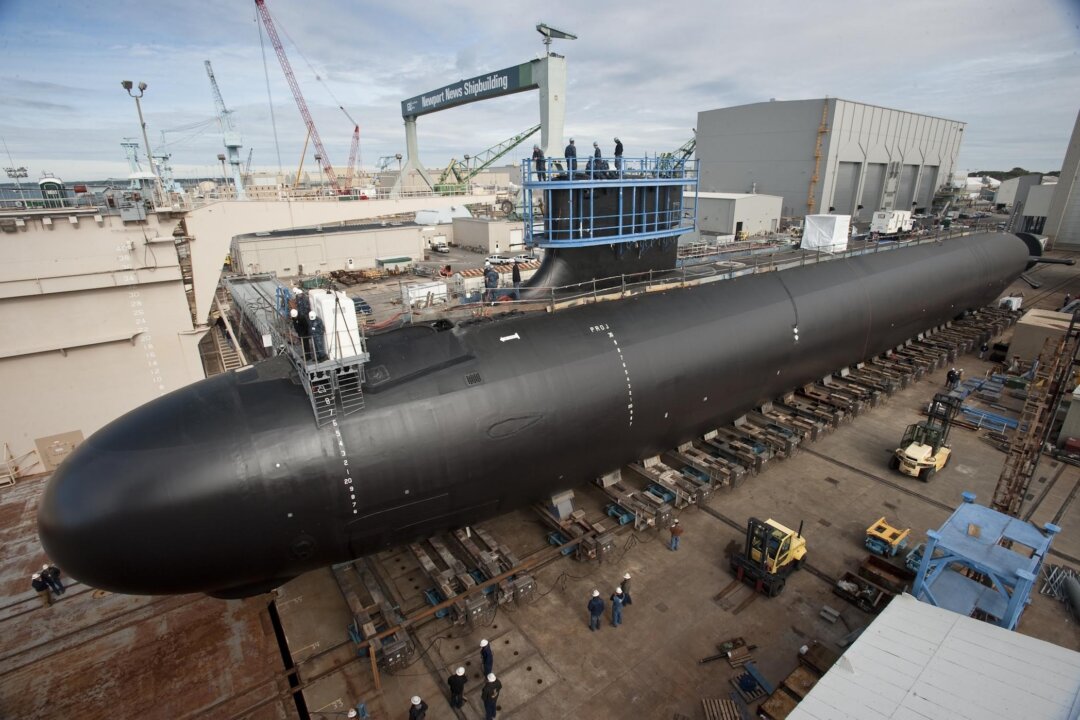Lack of shipbuilding capacity and Australia’s refusal to unquestioningly back the US in regional conflicts are among reasons AUKUS might not happen.
The United States may not deliver the three to five nuclear-propelled Virginia-class submarines promised under the AUKUS deal but instead seek to operate up to eight of its vessels out of Australian ports.
Under the alternative plan presented to Congress by the U.S. Congressional Research Service, Australia would instead spend billions of dollars on procuring other American-made defence technology.
The report criticises both countries for not undertaking “a rigorous comparative analysis … to examine whether Pillar One [nuclear submarines] would be a more cost-effective way to spend defense resources” than any alternatives.
The biggest impediment to the United States delivering on its promises is that it cannot build nuclear-propelled submarines fast enough.
From 2011 to 2024, they have been procured at a rate of two per year, costing about $4.5 billion each. But since 2022, shipyard and supplier workforce and supply chain problems have limited production to about 1.2 to 1.4 boats per year, resulting in a growing backlog of boats procured but not yet built.
Efforts are being made to increase production to two per year by 2028 and subsequently to 2.33 per year. But to achieve this, Congress has had to appropriate additional billions of dollars of funding, and just keeping up with the U.S. Navy’s demands would require producing two boats a year through at least 2043.
AUKUS Supported by Defense and Navy Testimony
Adding to the pressure, the Navy has requested two new Virginia-class submarines by 2025, requiring additional funding.
“Supporters of procuring two boats argue that doing so would provide greater stability for the industrial base and send a stronger signal of resolve to potential adversaries such as China,” the report notes.
However, the report also notes that witnesses from the Department of Defense and the Navy told a hearing of the House Armed Services Committee in October 2023 that they supported Pillar One and backed the request for supplemental funding for the submarine industrial base.
While the United States has assisted the UK’s nuclear-powered submarine programme since 1958, it has reportedly turned down requests from other allies—France, Italy, the Netherlands, Canada and Japan—to provide similar assistance.
Pillar One of AUKUS would make Australia only the second country to receive United States help in naval nuclear propulsion and nuclear-powered submarines and the first country to purchase a complete nuclear-powered submarine from the United States.
Beijing’s Perceptions Crucial
But it is not just construction capacity that is causing some in Congress to doubt whether Pillar One should go ahead—Australia’s reluctance to follow the United States into conflict and its aversion to nuclear weapons are also issues.
The report quotes Australian Defence Minister Richard Marles as saying in 2023, that “in exchange for the Virginia-class boats, Australia’s government made no promises to the United States that Australia would support [it] in a future conflict over Taiwan.
“Similarly, the chief of Australia’s navy in July 2024 reportedly stated that the AUKUS agreement would not automatically pull Australia into a war to defend Taiwan,” the report said.
Selling three to five Virginia-class submarines to Australia would convert them from “boats that would be available for use in a U.S.-China crisis or conflict into boats that might not.”
The report claims this could weaken deterrence and warfighting capability in the event of potential aggression by Beijing “if China were to find reason to believe, correctly or not, that Australia might use its Virginia-class boats less effectively than the U.S. Navy would use them.”
Similarly, Australia’s commitment under the Treaty on the Non-Proliferation of Nuclear Weapons (NPT) that it’s submarines would be fitted only with conventional weapons means the boats would never be armed with U.S. nuclear-armed sea-launched cruise missiles (SLCM-N).
“This reduction in the number of SLCM-N-capable Virginia-class boats could weaken rather than strengthen deterrence capability in connection with a U.S.-China or U.S.-Russia crisis or conflict,” the report concludes.
Pillar One, as currently structured, will not increase the total number of nuclear-propelled submarines available for performing missions until sometime in the 2040s, “when the first replacement [submarine] for the U.S. Navy or the first AUKUS boat for the Australian Navy (whichever comes first) enters service,” it says.
Instead, over the period leading up to that, it would absorb resources that could instead be “invested in Australian military capabilities that could be fielded sooner, and in some cases … soon enough to address the Davidson window [the period to 2027] or decade of concern [to 2030]”—both terms used to describe the heightened risk of potential Chinese aggression against Taiwan over the next few years.
Could Spend on Other Military Equipment
One such alternative, canvassed by the U.S. Congressional Research Service in the report, is operating Virginia-class boats from Australia, “which is something [that] can be done without selling the boats to Australia.”
Operating up to 12 U.S. Navy submarines from Australian ports—the four agreed under Pillar One, plus up to eight additional vessels—“would send a strong signal of U.S.-Australian alliance solidarity and resolve,” it says.
Under that scenario, Australian shipyards would get to perform maintenance, overhaul, and repair work.
This would see Australia spending instead on “long-range anti-ship missiles, drones, loitering munitions, B-21 long-range bombers, or other long-range strike aircraft,” which would be used to perform military missions for both Australia and the United States
Congress will now decide whether to formally consider the alternative outlined in the report, which was authored by Ronald O’Rourke, a naval analyst with the Congressional Research Service since 1984.

